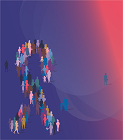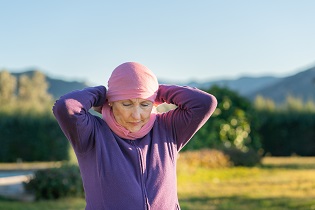Health
Cancer Inequalities Registry
|
Levels of health inequality between countries and regions with respect to cancer prevention, control, access to treatment and survival are substantial. Inequalities also occur within countries, between regions, and between social groups. The European Code of Cancer Practice enshrines a series of ten overarching rights for patients, and in particular signposts what patients should expect from their health system, in order for them to achieve the best possible outcomes. However, it is a reality of cancer care in Europe today that many patients cannot enjoy those rights, and it is only through coordinated action and policy developments at local, national and regional levels that the aim of equal access to high-quality cancer care for all will be realised. |
|
|
This project is being set up to provide new data and analysis based on quantitative indicators, qualitative data and contextual information emanating from surveys. It will comprise two outputs:
Alongside regular qualitative and quantitative assessments of the country-specific situation, the project will identify challenges and specific areas of action to guide investment and interventions at EU, national and regional level under Europe’s Beating Cancer Plan.
|
|
EU Country Cancer Profiles 2023
 |
The Country Cancer Profiles identify strengths, challenges and specific areas of action for each of the 27 EU Member States, Iceland and Norway, to guide investment and interventions at the EU, national and regional levels under the Europe’s Beating Cancer Plan. The European Cancer Inequalities Registry also supports Flagship 1 of the Zero Pollution Action Plan. Each Country Cancer Profile provides a short synthesis of:
The Profiles are the work of the OECD in co-operation with the European Commission. This is the first edition of the EU Country Cancer Profiles 2023, published on 1 February 2023. Download all EU Country Cancer Profiles 2023, either in English or in their native languages. |
Europe’s Beating Cancer Plan
Europe’s Beating Cancer Plan is a political commitment to turn the tide against cancer and another stepping stone towards a strong European Health Union and a more secure, better-prepared and more resilient EU.
Europe's Beating Cancer Plan is a key pillar of the European Health Union, presented in November 2020, calling for a more secure, resilient and better-prepared European Union. The Cancer Plan sets out a new EU approach to cancer prevention, treatment and care. It will tackle the entire disease pathway, from prevention to quality of life of cancer patients and survivors, focusing on actions where the EU can add the most value.
- Beating Cancer Inequalities in the EU - Spotlight on Cancer Prevention and Early Detection (January 2024)
- Learn more about Europe’s Beating Cancer Plan
KEY DATA
STATISTICAL RESOURCES
Latest trends and data analysis in Health at a Glance 2023: OECD Indicators (2023):
- Main causes of mortality
- Avoidable mortality (preventable and treatable)
- Cancer mortality
- Risk factors for health (smoking, alcohol consumption, overweight and obesity, etc.)
- Diagnostic technologies
- Cancer screening
- End-of-life care
Access all OECD projects on Health Statistics
DOCUMENTS AND RESOURCES
- Inequalities in cancer prevention and care across Europe, The Lancet Oncology, Volume 24, Issue 1, 2023, p.10-11 (January 2023)
- Challenges in access to oncology medicines: Policies and practices across the OECD and the EU, OECD Health Working Papers, No. 123 (November 2020)
- Addressing challenges in access to oncology medicines, Analytical report (2020)
- The Supply of Medical Isotopes: An Economic Diagnosis and Possible Solutions (2019)
- Health for Everyone? Social Inequalities in Health and Health Systems (2019)
- Cancer Care - Assuring Quality to Improve Survival (2013)
- Visit the European Cancer Inequalities Registry
- Access all OECD Health Publications
FURTHER READING
- Read about our work on Health Inequalities
- Find out more about our work on Healthcare Quality and Outcomes
- Learn about our work on Addressing challenges in access to oncology medicines
- Learn about Europe’s Beating Cancer Plan
- Access all OECD projects on Health Policies
CONTACT
For more information, please contact health.contact@oecd.org

Follow us on Twitter @OECD_Social
Related Documents

